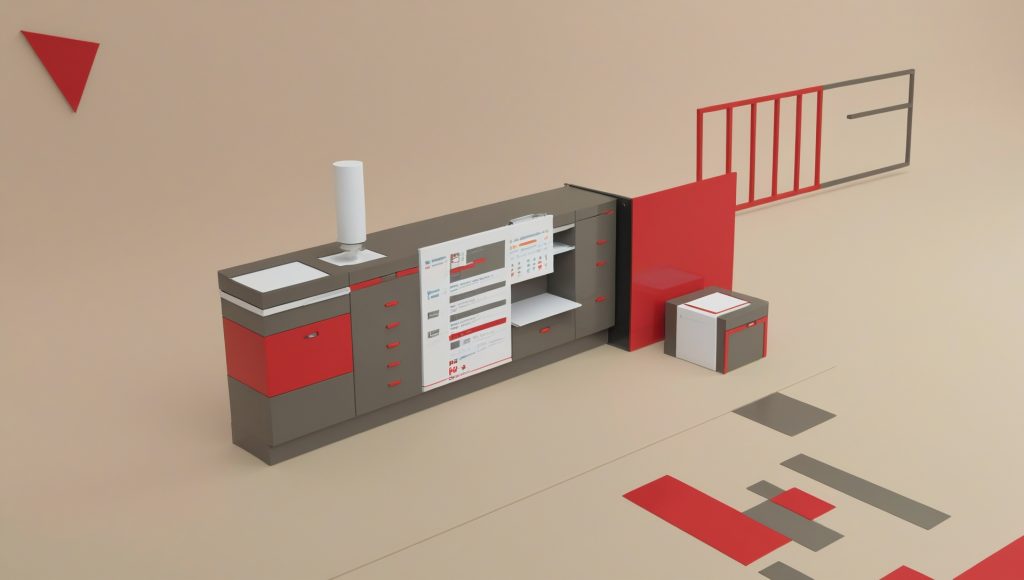Introduction
Zimbabwe’s manufacturing sector is showing signs of recovery and growth in 2025, with a projected expansion of 3.1% following a 2% growth in 2024. This resurgence is driven by increased agricultural output, improved macroeconomic stability, and government initiatives such as the Zimbabwe Industrial Reconstruction and Growth Plan (ZIRGP) 2024–2025. Despite this positive outlook, manufacturers face challenges including low capacity utilization, outdated technology, power supply issues, and regulatory complexities.
To navigate these hurdles and capitalize on growth opportunities, manufacturers in Zimbabwe are increasingly turning to Enterprise Resource Planning (ERP) software. ERP systems integrate core business processes-such as production planning, inventory management, procurement, finance, and compliance-into a unified platform, enabling manufacturers to improve efficiency, reduce costs, and enhance decision-making.
This article explores the top ERP solutions suited for Zimbabwe’s manufacturing sector in 2025, highlighting their features, benefits, and how they address local industry needs.
Zimbabwe’s Manufacturing Landscape in 2025
The manufacturing sector’s Volume of Manufacturing Index increased by 19% in the second quarter of 2024, signaling a recovery in production activities. Key subsectors such as drinks, beverages, tobacco, metals, and agro-processing are driving growth. However, the sector’s overall contribution to GDP has declined from 14.8% in 2018 to about 9% in 2023, reflecting structural challenges.
Capacity utilization remains low at around 52.3%, with many firms operating below optimal efficiency due to factors like unreliable power, obsolete machinery, and limited access to finance. The government’s ZIRGP aims to reverse these trends by investing in technology adoption, fostering local value chains, and promoting industrial innovation.
Why ERP is Essential for Zimbabwean Manufacturers
ERP software offers a comprehensive solution to the sector’s challenges by:
- Streamlining Operations: Integrates production, inventory, procurement, and finance for seamless workflows.
- Enhancing Productivity: Automates routine tasks and optimizes resource allocation.
- Improving Compliance: Ensures adherence to local tax laws, labor regulations, and reporting standards.
- Boosting Decision-Making: Provides real-time analytics and forecasting for better planning.
- Facilitating Growth: Scales with business expansion and supports multi-site management.
- Reducing Costs: Minimizes waste, downtime, and manual errors.
Top ERP Solutions for Zimbabwe’s Manufacturing Sector
1. SAP Business One
SAP Business One is a globally recognized ERP tailored for small to medium manufacturers. It offers comprehensive modules covering production planning, inventory control, procurement, and financial management.
Key Features:
- Real-time inventory and production tracking.
- Bill of Materials (BOM) management and shop floor control.
- Quality management and compliance monitoring.
- Financial consolidation and reporting aligned with Zimbabwean standards.
- Mobile access and cloud deployment options.
Benefits:
- Scalable for growing manufacturers.
- Strong analytics and reporting capabilities.
- Local partner support in Zimbabwe for implementation and training.
2. Microsoft Dynamics 365 Supply Chain Management
Microsoft Dynamics 365 offers an advanced ERP solution suited for medium to large manufacturers focusing on supply chain optimization and digital transformation.
Key Features:
- End-to-end supply chain visibility.
- AI-driven predictive maintenance and demand forecasting.
- Production scheduling and resource management.
- Integration with Microsoft Office and Power BI for enhanced analytics.
- Compliance tools for local and international standards.
Benefits:
- Supports multi-site and multi-currency operations.
- Cloud-based with robust security features.
- Enhances operational agility and responsiveness.
3. Odoo Manufacturing
Odoo is an open-source ERP platform popular for its flexibility and affordability, making it attractive to Zimbabwe’s small and medium manufacturing enterprises.
Key Features:
- Modular design with manufacturing, inventory, and accounting apps.
- Work order and routing management.
- Real-time inventory updates and automated replenishment.
- Quality checks and maintenance scheduling.
- Integration with e-commerce and CRM modules.
Benefits:
- Cost-effective and customizable.
- Easy to deploy on-premise or in the cloud.
- Active community and local implementation partners.
How ERP Addresses Zimbabwe’s Manufacturing Challenges
Power and Resource Efficiency
ERP systems help manufacturers monitor energy consumption and equipment performance, enabling predictive maintenance that reduces downtime caused by power fluctuations and machinery failures.
Regulatory Compliance
With Zimbabwe’s complex tax and labor regulations, ERP software automates statutory reporting and tax calculations, ensuring timely submissions to authorities like ZIMRA and NSSA.
Supply Chain and Inventory Management
ERP provides real-time visibility into raw material availability and finished goods inventory, reducing stockouts and excess inventory that strain working capital.
Financial Control and Cost Reduction
By integrating procurement, production, and accounting, ERP systems enable tighter cost control, budget adherence, and fraud prevention.
Factors to Consider When Choosing ERP in Zimbabwe
- Local Support and Customization: Ensure the vendor or partner understands Zimbabwe’s regulatory environment and industry specifics.
- Scalability: Choose solutions that grow with your business and support multi-location operations.
- Cloud vs On-Premise: Consider cloud ERP for flexibility and lower upfront costs, but evaluate internet reliability.
- User-Friendliness: Systems should be intuitive to reduce training time and increase adoption.
- Integration: Compatibility with existing software such as payroll, CRM, and accounting systems.
- Cost: Balance features with budget, including licensing, implementation, and maintenance.
The Future of ERP in Zimbabwe’s Manufacturing
The government’s commitment to industrial revitalization, combined with increasing foreign investment and technological advances, positions Zimbabwe’s manufacturing sector for growth. ERP adoption will be a key enabler, especially as Fourth Industrial Revolution (4IR) technologies like AI, IoT, and automation gain traction.
Manufacturers leveraging ERP solutions will enjoy improved productivity, better market responsiveness, and stronger competitiveness both locally and internationally.
Conclusion
Zimbabwe’s manufacturing sector is on a path to recovery and growth, supported by favorable government policies and improving economic conditions. However, challenges such as low capacity utilization, outdated technology, and regulatory complexity persist.
Top ERP solutions like SAP Business One, Microsoft Dynamics 365, and Odoo Manufacturing offer powerful tools to address these challenges. By integrating core processes, enhancing compliance, and providing real-time insights, ERP software is essential for manufacturers aiming to boost efficiency, reduce costs, and scale operations in 2025 and beyond.
Investing in the right ERP system will not only streamline manufacturing operations but also position Zimbabwe’s manufacturers to capitalize on emerging opportunities in a competitive global market.




